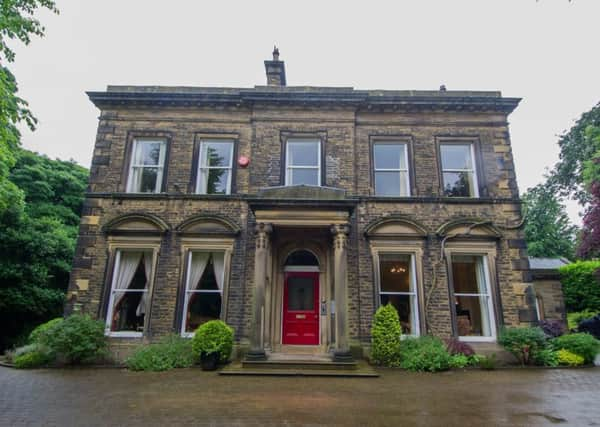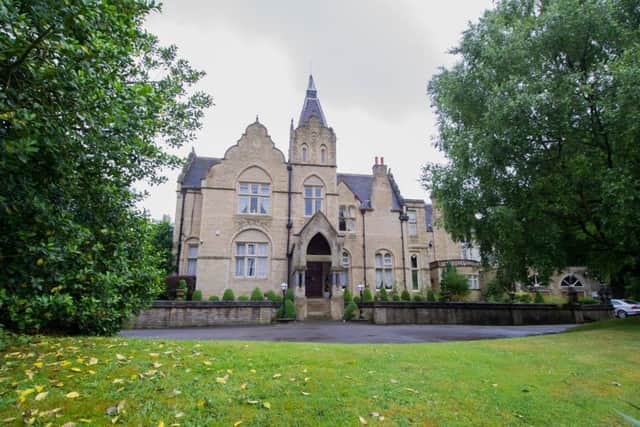What happened to Yorkshire's answer to Belgravia


Drive out of Huddersfield town centre along the main road to Halifax and, after a mile or so, you find yourself in a smart tree-filled suburb of grand Victorian houses. Many stand in their own grounds, some lurk up curving laurel-lined drives with imposing gates, and a fair few have towers and turrets. I’ve often wondered how such a handsome area came about and how it has survived so well for so long. And now, after a morning walking round it, I know.
The suburb is Edgerton, the former home of the town’s wealthy elite and a place, as a new book about it says, of “privilege, power and privacy”. Or, as one 19th century estate agent put it, “the Belgravia of Huddersfield”.
Advertisement
Hide AdAdvertisement
Hide AdAll this helps explain why Huddersfield is sometimes said to have once had more Rolls Royce owners per head of population than anywhere else in Britain. Or, others claim, Europe. Or even the world.


Well, why not? Edgerton, a solidly middle and upper-middle class enclave, was the prime location for the town’s great and good. They built or bought homes there reflecting their own greatness (and, it goes without saying, their own goodness).
An intriguing jumble of architectural styles, Edgerton was built on the western side of town so that prevailing winds would keep away troublesome industrial smoke. It was exclusively residential; there are still no shops, pubs or public buildings (a spruced-up tram shelter doesn’t really count).
I’m standing in front of one of the most striking of its houses – Lunnclough Hall, described when it went on sale in 1860 as “a proper residence for a Merchant Prince, who can retire from the busy hum and turmoil of active life into this, his quiet home, nestled amidst nature’s choicest products”.
Advertisement
Hide AdAdvertisement
Hide AdSavouring those choice products with me are David Griffiths, author of The Villas of Edgerton, an impressively well-researched, lavishly illustrated and stylishly designed study, and Chris Marsden, chair of Huddersfield Civic Society, the book’s publisher. We’re sampling the “perambulation” which takes in more than 60 major houses and occupies almost half the book.


“When we were at the bottom of the drive, you had no idea what was here, did you?” says Marsden. Now Lunnclough’s tall thin tower shoots 60ft up, rocket-like. At the heart of the house is a gracious circular hall, lit from above by a lanterned dome, with a landing gallery. With drawing room, dining room and parlour opening off it in a semi-circle, it wouldn’t look out of place in the stateliest of stately homes.
Lunnclough was designed – in what Griffiths calls “Tudor Gothic” style – by Pritchett and Sons, architects of Huddersfield’s railway station, a glorious building that prepares visitors for the town’s surviving wealth of Victorian architecture. As Griffiths points out: “Very very few of Edgerton’s Victorian houses have been demolished. In other towns and cities, you go on tours and the guide talks about ‘what used to be here’.”
Lunnclough has been converted into two dwellings and Christine Beacham and her family have lived in one of them for 13 years. “My great grandmother lived here and I used to come as a child every Saturday to see her,” she says. “We used to play in the billiard room and sit out to have afternoon tea.”
Advertisement
Hide AdAdvertisement
Hide AdShe says she’s been up the tower just once. It was a tricky climb, involving much clambering and scrambling, and she didn’t want to repeat it.
The tower was, however, once a major selling point. At the top was an observatory, where, as an estate agent said, “six people can sit comfortably. Gentlemen fond of the weed can enjoy themselves to perfection in this airy region. Four of the windows open for the purpose of using telescopes.” Possibly to keep an eye on toiling employees.
And there’s a fine porte-cochère, a covered porch where carriages pulled up and cars still do. “The only porte-cochère in Huddersfield,” says Marsden, with the air of a man who knows his way around porte-cochères. “It has the feel of Rolls Royces about it, doesn’t it?”
It was Lunnclough that first sparked David Griffiths’ interest in Edgerton. He settled in the suburb in the late 1980s after moving to Huddersfield to work in local government. “As with a lot of incomers, I became interested in local history,” he says. After retiring, he threw himself into research – so much so that “the book is twice the length I originally intended.”
Advertisement
Hide AdAdvertisement
Hide AdThe result is a fascinating insight – as much into social history as into architecture. Prosperous provincial life parades through it – the house-owners’ fluctuating fortunes, their clubs and societies, their fondness for tennis courts and accumulating wealth-signalling household clutter. “Eight ft bagatelle table and fittings … rich lace curtains and deep fringe valance... Spanish mahogany Tudor bedstead” noted the advertisement for one 1879 sale of house contents.
The gaily decorated programme for an 1897 ball at Stoneleigh, a Flemish-looking house that employed 18 staff, lists the Toreador waltz followed by the See Me Dance polka and the Geisha Lancers.
We walk round roads lined by horse chestnuts and rhododendrons, places of privet and privacy. This is essentially a garden suburb jigsawed into a sometimes steep landscape. Some gardens needed to be terraced and lawns could slope alarmingly.
That didn’t stop the wool merchants, mill owners, engineers and lawyers who lived here from staging extravagant outdoor events. Few can have been more lavish than a 1904 wedding reception on the lawn of Cleveland House.
Advertisement
Hide AdAdvertisement
Hide AdAs a surviving photograph shows, the 230 guests – top-hatted toffs and broad-bonneted toff-ettes – look immensely pleased to be there. And, in one or two cases, even more pleased with themselves. It’s the world of the Birlings, the prosperous family whose consciences are clinically dissected in JB Priestley’s An Inspector Calls.
Cleveland House is now a care home. Other houses have become offices or private schools – or, in the case of Edgerton Hill, Huddersfield’s Ukrainian Club. With its bar and functions room, the 150-member club has been here since the 1960s.
John Kybaluk, vice chairman of the Huddersfield branch of the Association of Ukrainians in Great Britain, takes us round. It’s as hard to imagine how these rooms might once have looked as it’s easy to sense the former way of life at, say, Laurel Bank.
Once sub-divided into bedsits, and more recently a care home, Laurel Bank has followed a recent Edgerton trend of being converted back into a private family house. Ray and Nivin Milne bought it in 2002 and have painstakingly – and magnificently – restored it.
Advertisement
Hide AdAdvertisement
Hide Ad“The rooms were divided into two or three when we moved in,” says Nivin. “We took down a lot of partition walls and when we cleared all the washbasins and toilets, the lawn was covered in white porcelain.”
The result is a house where a Victorian mill owner would feel perfectly at home. It’s a highlight of our tour, which we finish by car. Not, sadly, a Rolls Royce.
The Villas of Edgerton by David Griffiths is published by Huddersfield Civic Society (£12.95, or £15.45 including postage and packing. Phone 07876 377588 or visit huddersfieldcivicsociety.org.uk.